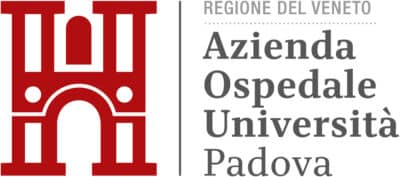

The First-level Short Specialisation Degree in Use of Ultrasound in the Clinical Practice of Midwifery prepares professionals in the field on ultrasound diagnostic methods, an indispensable tool today for allowing midwives to work autonomously. There are several areas where these practices can be used, and differing opinions on whether they should be included in areas like the delivery room. The ultrasound can be an indispensable tool when it comes to helping patients in labour, managing low-risk pregnancies, clinical activities during the first trimester (antenatal counselling), and as a first course of action in obstetric or gynaecological emergencies.
The First-level Short Specialisation Degree in Use of Ultrasound in the Clinical Practice of Midwifery is to have a number of hours of theory-based lectures, with lecturers from different backgrounds, in order to lay a foundation for the internship to come later. Actually, the lectures allow for further expanding knowledge of physiology and pathologies that midwives may encounter in working in the different areas where ultrasounds are used.
The main objective of the course is for the student to be able to distinguish between a normal ultrasound image and one that shows a pathology, potentially defining its characteristics, asking for support in interpreting the image and/or sending the patient for a more specialized visit. A secondary objective is increasing the degree of autonomy in using the ultrasound in areas of the midwifery profession where new developments are taking place.
Those who can take part in the First-level Short Specialisation Degree in Use of Ultrasound in the Clinical Practice of Midwifery are midwives who hold a three-year degree in obstetrics, whether employed in the public or private healthcare sector, with the desire to learn more about using ultrasound technology in different areas of obstetrics and gynaecology. Whether midwives should use ultrasounds as a tool autonomously – the ability to make assessments without the supervision of another medical figure – is up for debate. At present, point-of-care sonography is the only area of assessment that doesn’t require another medical figure to be present, allowing the midwife to make use of ultrasounds to resolve any doubts, to verify parameters (checking for heartbeat), and help in the delivery room (seeing foetal position).
After a physical or clinical examination, the ultrasound can, in some specific cases, be a useful tool for getting an overall understanding of the patient’s situation. Midwives can use the ultrasound to confirm pregnancy in utero, to understand why a patient is bleeding heavily, to look for a foetal heartbeat, to check the level of amniotic fluid, to see the position of the foetus, to check on the health and biometrics of the foetus, to check on position in labour, to see if a ventouse will be necessary, to check the pelvic floor, and to monitor the formation of adnexal cysts.
The First-level Short Specialisation Degree in Use of Ultrasound in the Clinical Practice of Midwifery will provide training in:
Module 1: ULTRASOUND PHYSICS
Ultrasound mechanisms, their characteristics and how they can be used.
Module 2: GENETICS
Screening techniques and prenatal diagnosis, teratology.
Module 3: ANATOMICAL PATHOLOGY
Anatomical study of foetal malformations.
Module 4: FETAL ULTRASOUND ANATOMY, IN PHYSIOLOGY AND PATHOLOGY
Examples of normal ultrasounds as compared to those showing pathologies, by organ and apparatus.
Module 5: ULTRASOUND SEMEIOTICS IN GYNECOLOGY
Examples of benign and malignant tumours as seen on ultrasound.
Module 6: APPLICATION OF ULTRASOUND IN ASSISTED REPRODUCTION
From follicular monitoring to guided transfer techniques to the study of tubal patency.
Module 7: USE OF ULTRASOUND TO STUDY THE ANAL SPHINCTER IN GRADE III-IV LACERATIONS
Getting a highly detailed ultrasound for suspected cases.
Module 8: USE OF ULTRASOUND IN THE DELIVERY ROOM
Areas of use of ultrasound: checking for position, before operative delivery, as a support in postpartum haemorrhage.
The general ranking of merit will be published on the Italian page of this Master according to the timing provided in the Call.
Information
FAQ
The theoretical part will be delivered in a dual format. For remote learning, the Zoom platform will be used. Attendance on-site will be required for the internship activities. This will include a minimum of four weeks of practical training with tutoring in the relevant hospital departments, offering the opportunity to perform ultrasound examinations, including cardiac and biometric assessments—such as those in the first trimester—as well as gynecological scans.
In addition, in-person seminars will be organized as needed, featuring the use of static and dynamic ultrasound simulators.
The final assessment will consist of the development of a personal project, which may take the form of a project work, allowing each student to express themselves in the area they feel most connected to. During the course, knowledge acquisition may also be assessed through an exam, article, or written paper, which will help identify any conceptual gaps. Study materials will be provided, along with opportunities for direct interaction with the teaching staff.
In all areas of gynaecology and obstetrics, so that the learner can see how ultrasounds can be applied to various situations. Practical training hours include supervision by a “tutor.”
As part of point-of-care sonography, and therefore during a visit or if there are any doubts of a gynaecological nature. It is hoped that, in the future, the range of uses will expand even for midwives, for example in the first trimester, at the end of pregnancy, and in emergency-room situations, beyond routine visits. A midwife who also has ultrasound training benefits the entire team in terms of expertise and makes for a better final result, meaning giving the patient the best possible care.

